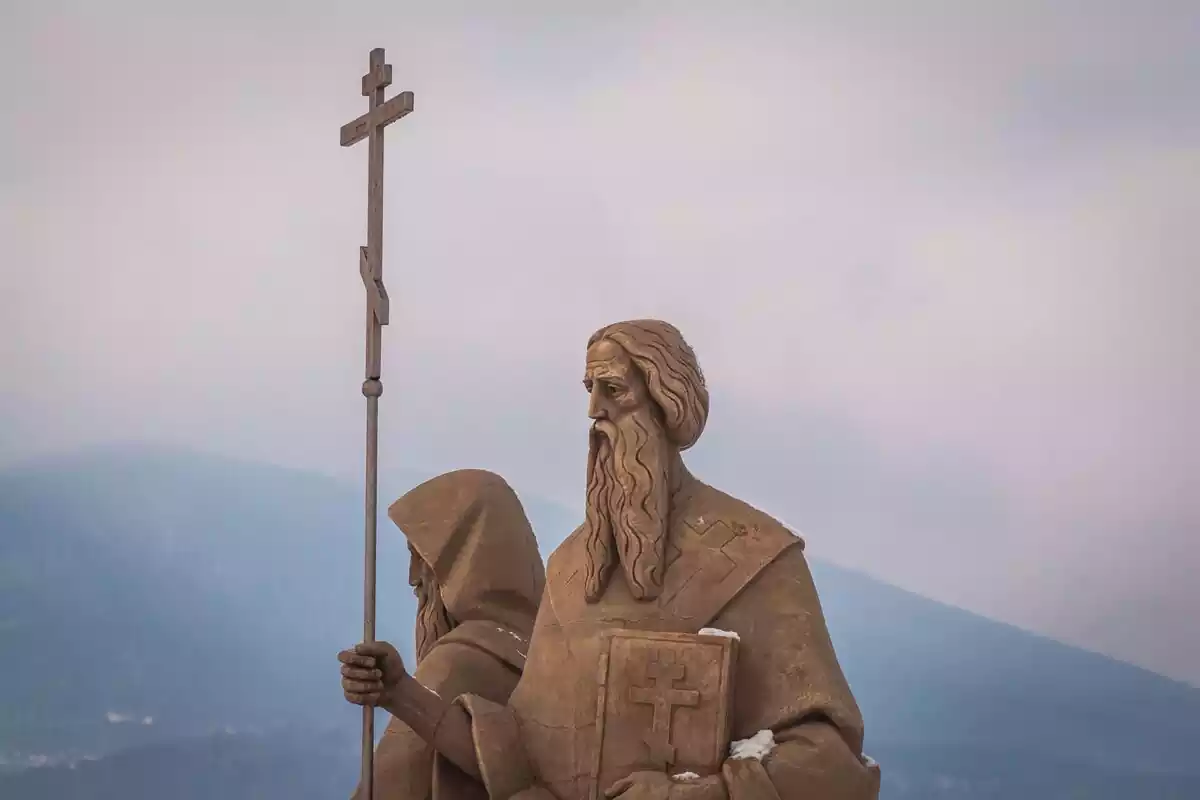After the crucifixion and the resurrection of Jesus Christ, there were many sects of Christianity. This is very different from today's denominations in that the sects differed on the actual framework of Christianity, and modern denominations differ only on the point of views within a fairly standard framework.
The Councils of Nicaea I (325 AD), Constantinople I (381 AD), Ephesus (431 AD), and Chalcedon (451 AD) determined this framework. To sum up the problems of the Early Christians, one could say that there was absolutely nothing “organized” about organized Christianity.
The sects of early Christianity fought within themselves and, like modern Christians, each group professed to know “the single truth” concerning Jesus, salvation, and the wrath of the Old Testament God. A force of arms decided the contents of the Holy Bible that we read today and the Gnostics were the group that lost. As a result, little was known about Gnostic Christianity until the Nag Hammadi Library was discovered in 1947.
Gnostics' version of the Demiurge
The views of the Gnostics were drastically different from the other sects; their approach to Christianity was mystical and eclectic. They called the Christian Deity the “One True God.” They viewed this God as having a feminine part, which was the Spirit. Furthermore, they believed that Jesus was the celestial offspring who came from the union of the Male God and the Female Spirit to form the Holy Trinity.
The concept of the Demiurge is another point that separated the Gnostics from the Orthodox Christians. Demiurge is the name that the Gnostics gave to the Old Testament God, who can be noted for His vengeance and wrath. The Gnostics did not believe that this was “the Good Father” or the “True Father” of whom Jesus preached.

Another large difference between the Gnostics and the Orthodox Christians was the creation myths. Before the creation of the Earth, the Gnostic Goddess Sophia accidentally gave birth to the Demiurge. Sophia's name comes from the Greek word for “wisdom,” the personification of the Female Divine.
There are various versions of Her myth. According to one, Sophia is the active creative force and Her consort is the passive creative force. The male aspect of the Divine is the Unknown but Good God and the Heavenly Father of Jesus. The story goes that Sophia desires to have a child God, but she does not "actively mate" with the Good Father in a fashion that we might envision.
However, Her thoughts become manifest by accident, after all She is a Goddess! Her thought to have a child is infused with Heavenly Light and brings this Child God into being. The exact means by which this cosmic birth process occurred was and continues to be the subject of much debate among the Gnostic Christians.
According to this version of creation, Sophia's desire somehow veiled infinity, casting a shadow of heavenly matter, which lacked spirit. Therefore, the Old Testament God was jealous and not pure. The Demiurge, called Yaldaboath, emerged from Sophia like a bad reflection or a bad dream about Heaven. To the Gnostics, the Demiurge was a parody of the true, Hidden God.
Embarrassed at Her own actions, Sophia then threw the jealous and revolting God form out of Heaven. After seeing the results, Sophia banished Yaldabaoth from Heaven and gave it independent existence. She did not want the other Aeons (or immortal beings) in Heaven to see Her mistake.
Sophia then enters into a cloud and begins to cry for all eternity at Her foolish mistake. The Gnostics called the Old Testament God Yaldabaoth, which means "child, pass through to here" or by the name Samael, which means the “blind god” or "the God of the blind". This type of "blindness" corresponds with the Spiritual Mysteries hidden within each of us.

This God form was the arrogant creator-god of the Old Testament. In his arrogance, he spoke of no other Gods, due to His ignorance, He did not even recognize his own Mother Sophia. In Gnosticism, the Demiurge, creator of the material world, was not God but the Archon, or chief of the lowest order of spirits or aeons.
According to the Gnostics, the Demiurge was able to endow man only with psyche, the sensuous soul; only the True God could add the "pneuma", or the rational soul. This is the "feminine aspect of the Spirit", the Greek term "pneuma", often associated with the Holy Spirit of the New Testament.
The Gnostics identified the Demiurge with the Jehovah of the Hebrews. In philosophy, the term is used to denote a Divine Being that is the builder of the universe rather than its creator. Some Gnostics taught that the world is ruled by evil archons, among them being the deity of the Old Testament, who hold captive the spirit of humanity.
They believe that this is the true Satan, the Hebrew "ha-satan" or adversary of the True God or the Good Father. In the Demiurge's own arrogance and ignorance, He creates the visible world but begins to withhold knowledge from humanity. This example is made when Adam and Eve are instructed to not eat from the "Tree of Life" and the knowledge of good and evil.
At this point, humankind becomes aware of themselves, their own ideas, their own opinions and begins to question the "only God they know." Thus, the anger of the Old Testament God begins and His vengeful tactics of ruling the earth is well documented. Whether you choose to agree with this concept is up to you. However, it does explain a lot about the difference in the Vengeful Old Testament God and the God of Love that Jesus proclaimed in the New Testament.
Gnostics' version of Jesus and His true purpose
The Gnostics even disagreed with the Orthodox Christians about who Jesus really was and what was his true purpose on earth. For the Gnostics, Jesus did not come from the Demiurge, but instead had come from the True Father God and the Holy Spirit Mother. In fact, Jesus came to the earth to correct the spiritual mistakes of the Demiurge and change the path of humanity towards a peaceful form of spirituality.

The Gnostics believed that Jesus taught through secret knowledge, which he did not teach the masses. The special knowledge was known as "gnosis." Gnosis was not a logical type of knowledge, as one might gain in the study of the empirical sciences or by reading books. Instead, this intuitive knowledge would come from the study of our own soul or inner being through methods of meditation.
The Gnostics also disagreed on the point that man was sinful by nature, but believed in human error due to spiritual ignorance. By gnosis, they believed that the world could correct its erring ways and gain salvation. The Gnostics believed that there were many “secret teachings” that each follower could only receive directly from Christ.
The secret gospels of the Nag Hammadi Library
Like the Kabbalists, these teachings were revealed once one had made his/her vessel pure and clean to receive such enlightenment. The Gnostics were the more literary of the early Christian sects, proven when one single jar contained 52 of the Nag Hammadi manuscripts.
Included in these writings were additional gospels by the other eight disciples, additional books of Acts of the Apostles as told from the other ten apostles, the apocalypses of Moses, the Virgin Mary, and the fragmented Gospel of Mary Magdalene. In addition, infancy gospels were found pertaining to the early life of Christ, as well as the infancy of the Virgin Mary.
Most importantly, the Nag Hammadi Library contained “secret” gospels, in which Christ appeared to His disciples one by one. Christ instructed these secret revelations to not surface to the masses until after each disciple's death. These writings proclaim a completely good God; they describe a transcendent God so filled with enlightenment and so vast that it is too incomprehensible to properly define.
They believe not only in a Christian Goddess, but also in several Female Deities, similar to the Pagan pantheons of Gods and Goddesses. The Gnostics believed that God was not just a being from another realm, but that each of us possessed part of the vastness of The Great Deity inside ourselves.

